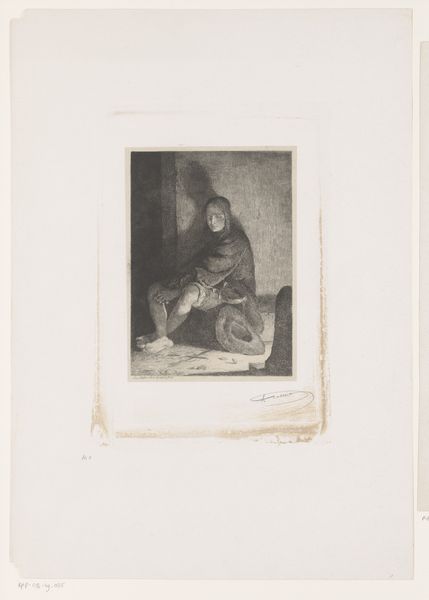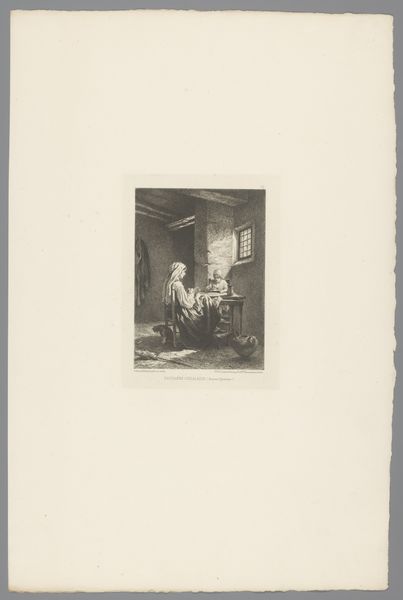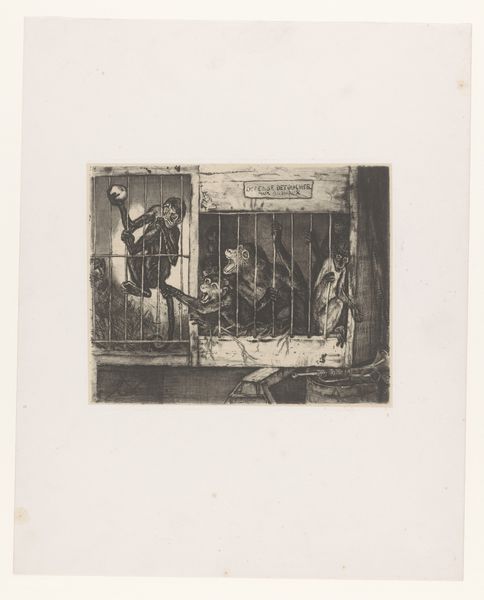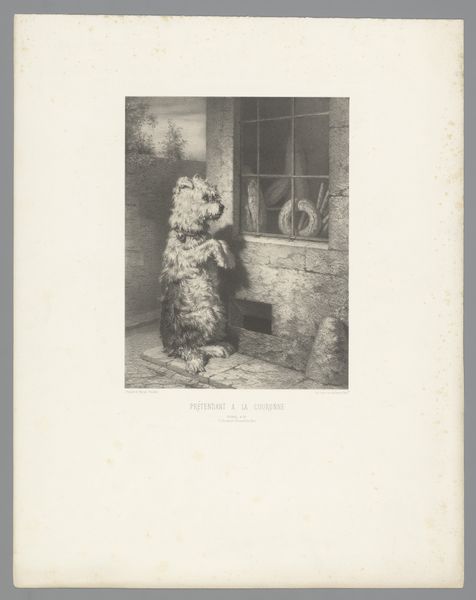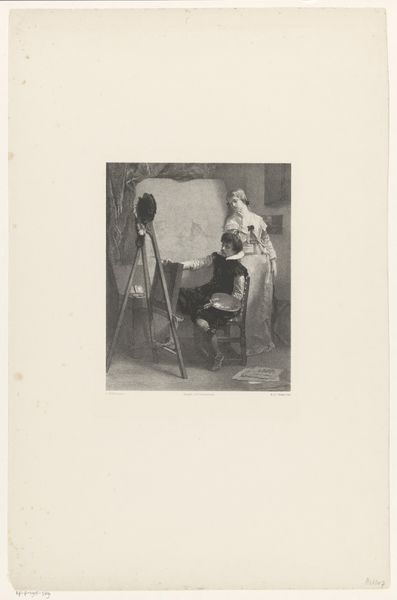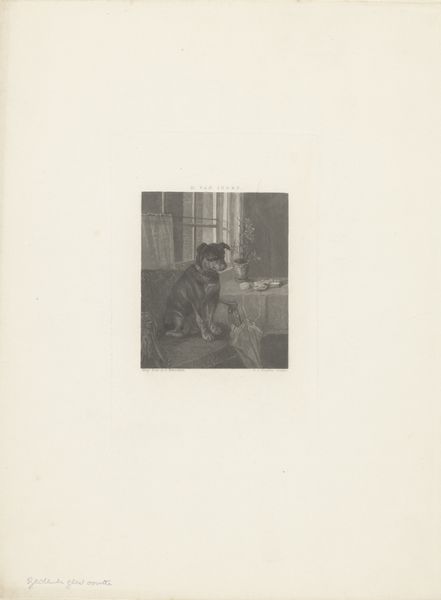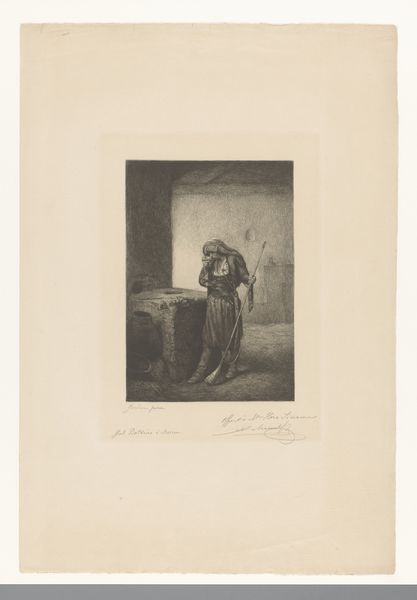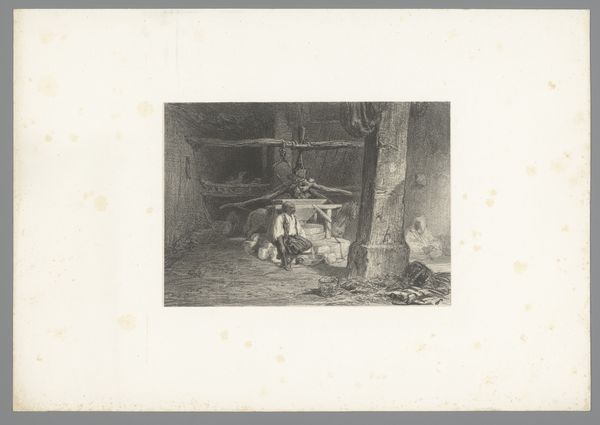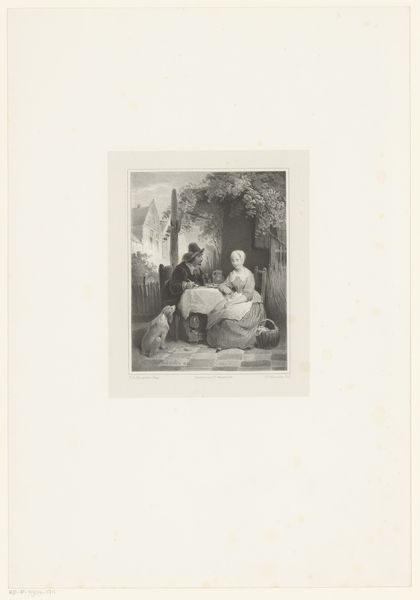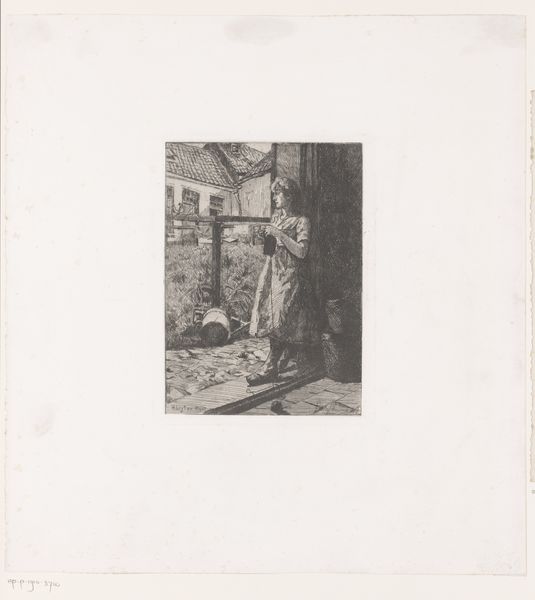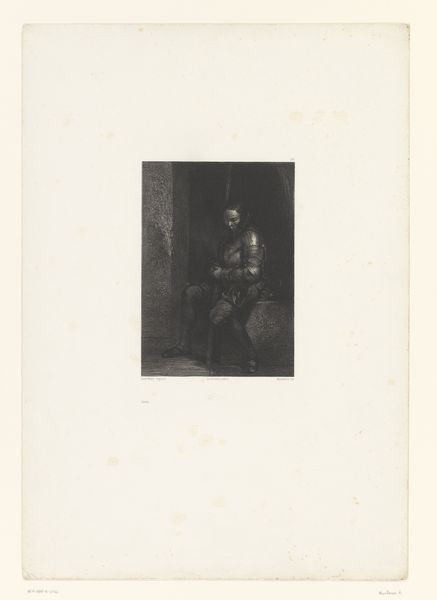
Dimensions: height 388 mm, width 267 mm
Copyright: Rijks Museum: Open Domain
Editor: We're looking at Charles Billoin's ink drawing, "Gevangene aait door de tralies heen een hond"—"Prisoner petting a dog through the bars"—made somewhere between 1849 and 1870. The mood is… melancholic, isolating even. What whispers to you when you look at it? Curator: Oh, it hums with echoes! Immediately, I feel the weight of loneliness, that bone-deep ache for connection, mirrored between man and beast. Notice how Billoin renders the light, almost religiously, focused on the clasped hands, the dog’s muzzle – pure, unfiltered affection. Ever felt like that pup, yearning for someone just beyond reach? Editor: Definitely. But is there also a hint of hope? The dog isn’t snarling, it’s offering comfort. Curator: Exactly! Perhaps Billoin is suggesting even in the darkest corners – a prison, literal or metaphorical – empathy can bloom. Romanticism often finds beauty in suffering, wouldn't you say? Billoin shows us this intimate moment, not as grand drama, but in shared tenderness. A gentle scratch against harsh iron bars, almost a revolutionary act. Don’t you think? Editor: I see your point. It makes me think about who this prisoner is. Did he actually find solace? Curator: Ah, the delicious ambiguity! Billoin gives us just a glimpse. Perhaps solace, perhaps just a momentary distraction from despair. What will remain with the prisoner when the dog departs? Is it better to have loved and lost even from within a cage? Editor: Wow, that gives me a lot to think about. It's more powerful than I initially realised. Curator: Art, at its finest, should be a conversation, no? One that continues long after we walk away. For me, Billoin is posing a question of the deepest sort— What are the true limits of compassion?
Comments
No comments
Be the first to comment and join the conversation on the ultimate creative platform.
